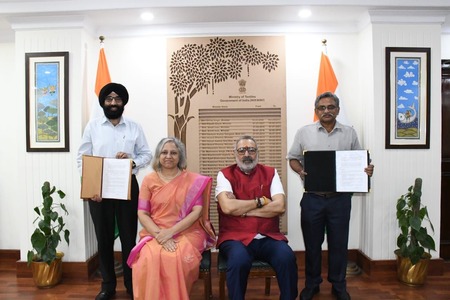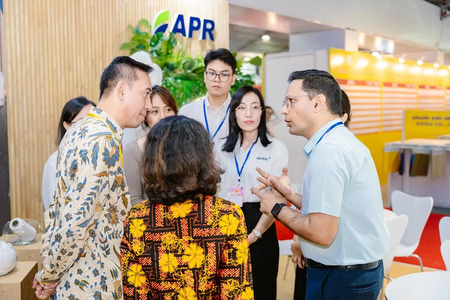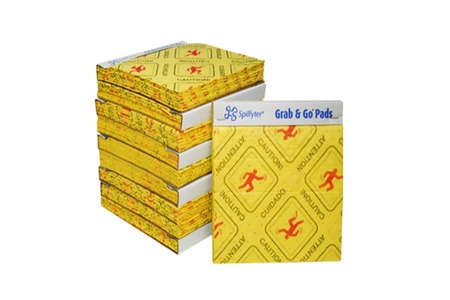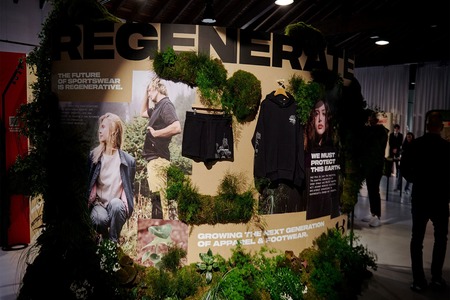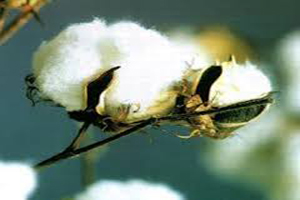
Jamaica on track to spin money from its cotton production
YarnsandFibers News Bureau 2014-02-24 12:10:00 – JamaicaJamaica is the only island capable of large cotton production at this time knowing this the Japanese government has decided to to invest around US$107,000 (J$11 million) to resuscitate the local West Indian Sea Island Cotton industry for which there is an annual global demand of six-million pounds of lint. The money will be put in use to purchase a row-crop tractor, a high-crop tractor, two boom sprayers, and a cultivator which are vital to get Jamaica on track to tap into this lucrative market where it enjoys significant competitive advantages. Apart from Jamaica, Sea Island Cotton is grown commercially in Antigua, Barbados and Nevis.
Dalkeith Hanna chairman of the Jamaica Agricultural Development Foundation (JADF), who also represents Jamaica on the Board of the West Indian Sea Island Cotton Association (WISICA), the organisation which owns and controls the trademark - said there are few other crops which can compete with its potential for value addition.
Vitus Evans, chief executive officer of the JADF has outlined a plan to bring 5,000 acres of cotton under cultivation on a phased basis over a three-year period. The ginning and exporting of lint will take place in the early stages and then move up the value chain to spin, weave and produce fabric and ultimately manufacture garments locally.
They estimate that a vertically integrated West Indian Sea Island industry supported by 5,000 acres of cotton production when fully implemented will provide for over 2,000 persons full-time jobs, 15,000 on a seasonal basis and generate income in excess of US$800 million per year.
The approach which is being planned is to initially have a number of experienced farmers growing the cotton under contract and expanding the pool of farmers as production increases. Both small and large farmers will be encouraged to grow the cotton.
Certified seeds will be provided to registered growers to whom a pool of equipment will be made available for land preparation and crop care. Technical assistance and extension services will also be made available to the new growers, with a ginnery to be centrally located where the seed cotton will be ginned, stored and baled.
According to the Industry insiders, in order to increase production to satisfy demand there needs to be a close and ongoing alliance between growers, purchasers and marketers.
Sea Island Cotton is the world's best quality cotton based on its fibre length, silk-like quality, fineness and texture. There is a high demand internationally with buyers from Switzerland, Japan, the United States, Italy and the United Kingdom showing interest.
At US$10 a pound for the lint it is by far the highest priced cotton in the world, five times the cost of the next best cotton, the Giza 45 out of Egypt.
Hanna supporting Evans said that research conducted in collaboration with the University of the West Indies and the Ministry of Agriculture in all aspects of crop production, nutrition, pest control and irrigation systems has provided the requisite database to establish the best agronomic practices for growing the cotton. He is satisfied that they have significantly reduced the risks associated with the crop through the work that they have done to date.
It is a crop for which the Caribbean has a natural geographic advantage. India, China, the United States and Africa have made repeated efforts to grow similar quality cotton but has been unsuccessful.
The JADF strongly believes that a vertically integrated Sea Island Cotton Industry offers tremendous possibilities for economic growth for Jamaica.
Market Intelligence
Ask for free sample Report

experience
Customer Base
dedicated team
Countries Served Worldwide



